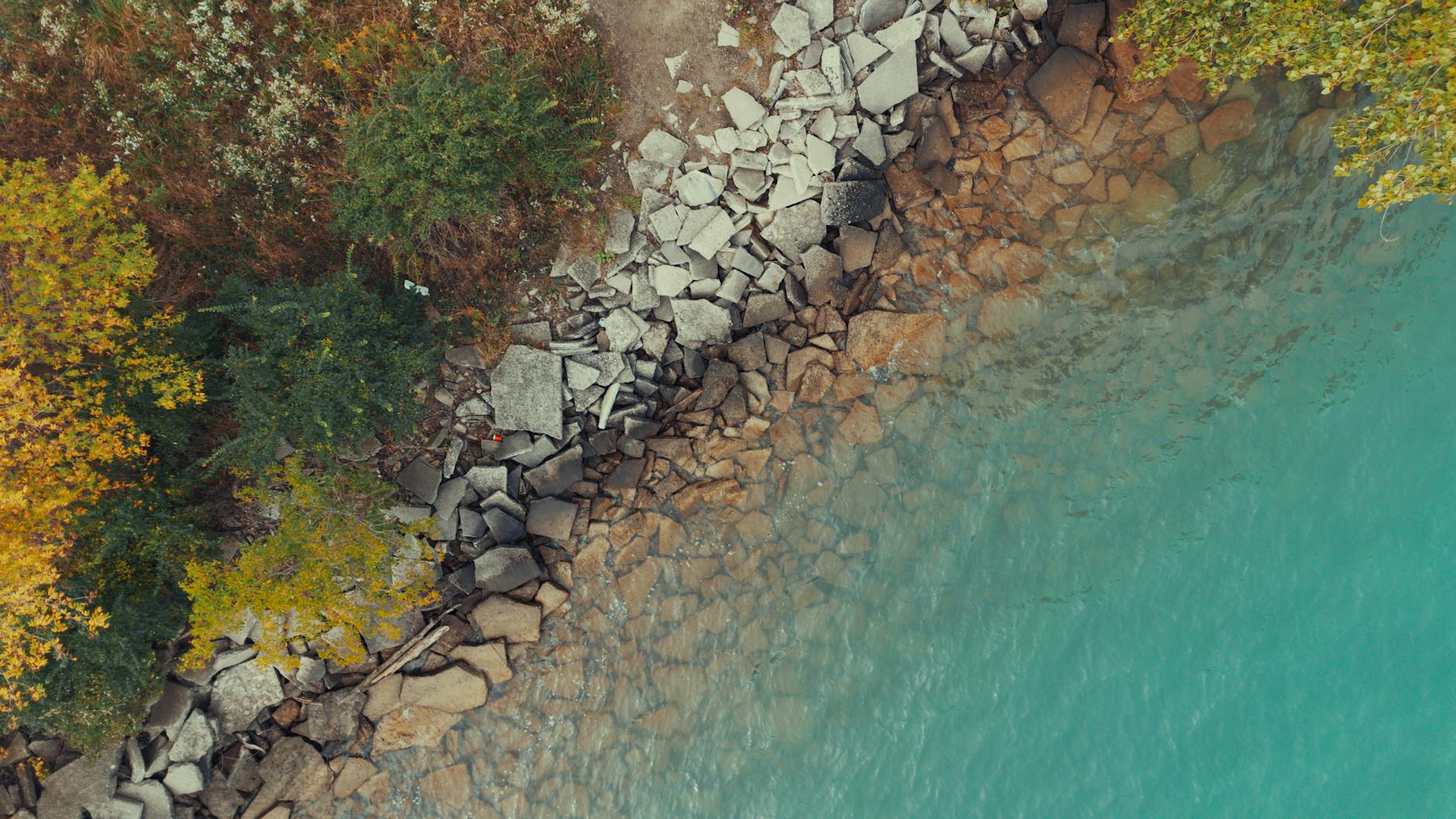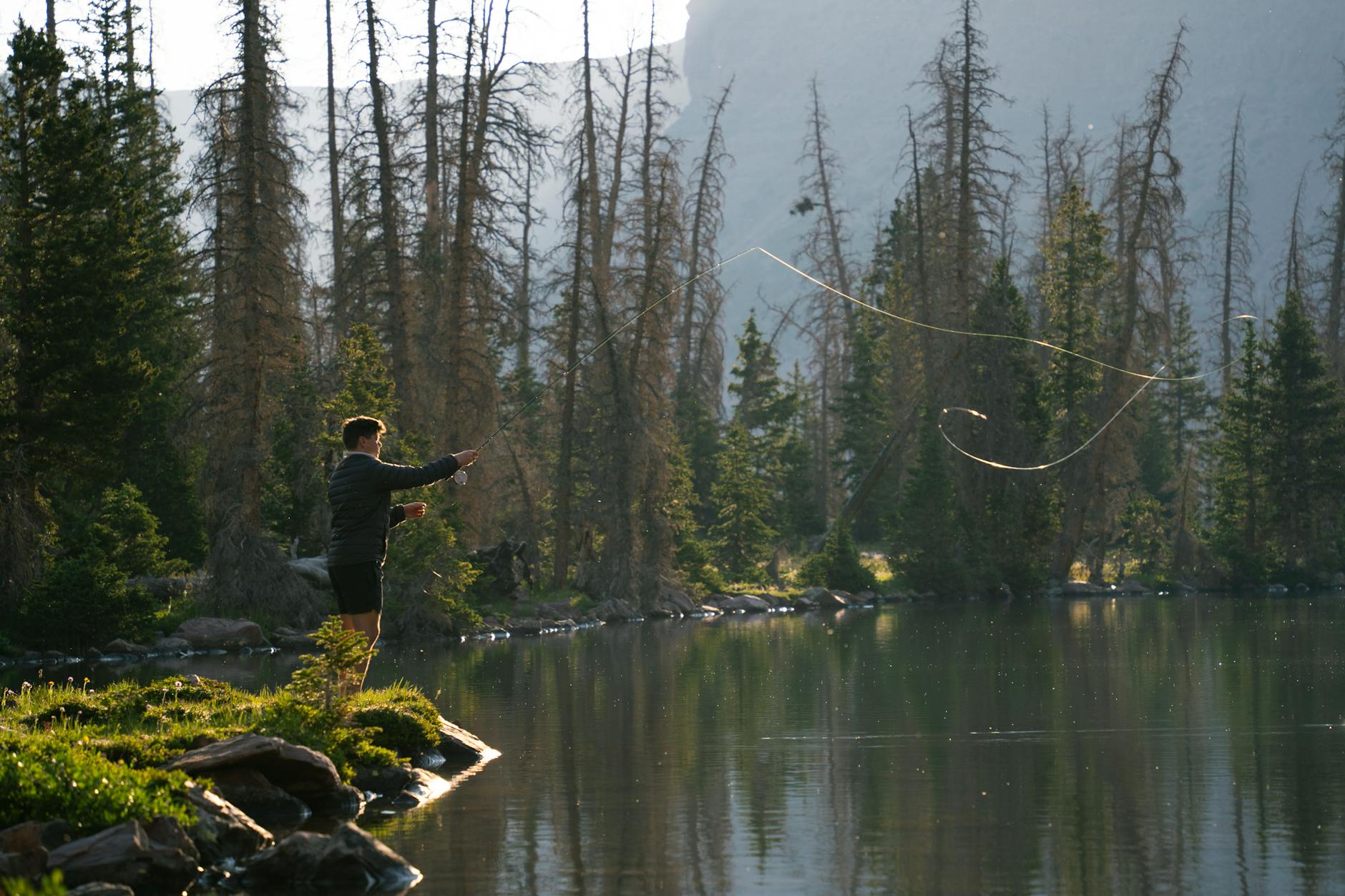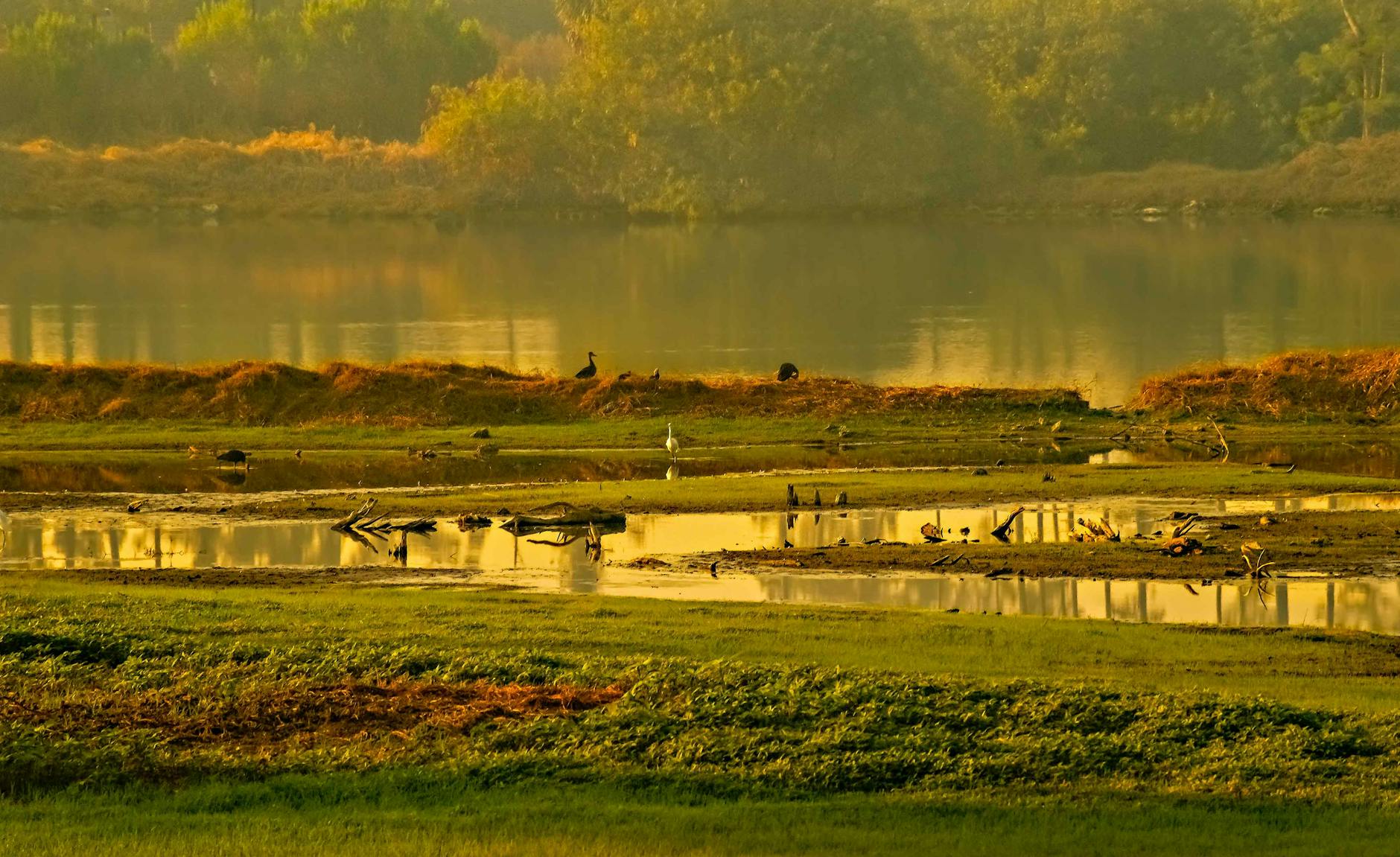Are you ready to escape the hustle and bustle of city life? Imagine waking up to the sounds of chirping birds and rustling leaves. Florida offers some of the best camping and hiking spots for outdoor enthusiasts. And if you’re considering investing in cheap land for sale in Florida, you’re in for a treat. Not only do you get a piece of paradise, but you also have endless opportunities to explore the great outdoors.
Click here to learn more about Ocala National Forest.
Discover the Joys of Ocala National Forest
Ocala National Forest is a gem in the heart of Florida. It’s perfect for camping, hiking, and immersing yourself in nature. Picture yourself setting up a tent under towering pines and enjoying a night under the stars. The forest offers a range of camping options, from developed campgrounds to primitive sites. This means you can choose your level of comfort and adventure.
For hikers, Ocala National Forest boasts over 100 miles of trails. The Florida Trail, a national scenic trail, runs through the forest, offering breathtaking views and diverse wildlife. You might spot deer, black bears, or even a wild turkey! It’s a paradise for nature lovers and a fantastic way to explore the beauty of Florida’s wilderness.

Explore the Beauty of Myakka River State Park
If you’re looking for a mix of hiking and camping, Myakka River State Park is a must-visit. This park is one of Florida’s oldest and largest state parks, offering over 58 square miles of pristine nature. The park is famous for its diverse ecosystems, including wetlands, prairies, and hammocks.
Camping in Myakka River State Park is an experience like no other. You can choose from full-facility campsites or more primitive options, depending on your preference. As you set up your camp, you’ll be surrounded by the sounds of the river and the songs of birds.
For hikers, the park offers a variety of trails that cater to all skill levels. The Birdwalk is perfect for beginners, providing a short, scenic walk where you can observe a plethora of bird species. For more seasoned hikers, the 39-mile Myakka Hiking Trail offers a more challenging adventure. It takes you through different landscapes, giving you a real taste of Florida’s natural beauty.
Unwind at Anastasia State Park
Anastasia State Park is another fantastic spot for outdoor activities. Located near St. Augustine, this park offers a perfect blend of beach and forest. It’s an ideal destination if you love both hiking and the beach. Imagine spending your day hiking through lush forests and then relaxing on a sandy beach with the sound of waves in the background.
Camping at Anastasia State Park is a delightful experience. The park offers well-maintained campsites with amenities like restrooms and showers. You can enjoy the rustic feel of camping while still having some modern comforts. The campsites are nestled among trees, providing a serene environment for a peaceful getaway.
The park’s hiking trails are equally impressive. The Ancient Dunes Nature Trail takes you through ancient sand dunes covered in beautiful vegetation. It’s a short hike, but it offers stunning views and a glimpse into the park’s unique ecosystem. If you’re up for more exploration, the park has several other trails that offer a mix of scenic views and wildlife spotting opportunities.
Click here to learn more about Withlacoochee State Forest.
Enjoy the Peace of Withlacoochee State Forest
Withlacoochee State Forest is another top choice for camping and hiking. It’s one of the largest state forests in Florida, covering over 157,000 acres. The forest is known for its diverse landscapes, including swamps, sandhills, and hardwood forests.
Camping in Withlacoochee State Forest is an adventure waiting to happen. The forest offers several campgrounds, each with its unique charm. Whether you prefer a developed campsite or a more primitive setting, you’ll find the perfect spot to pitch your tent and enjoy the tranquility of nature.
Hiking enthusiasts will love the forest’s extensive trail system. The Withlacoochee State Trail is a highlight, stretching over 46 miles and offering a variety of scenic views. You’ll pass through dense forests, open prairies, and along the Withlacoochee River. It’s a fantastic way to experience the natural beauty of Florida and get some exercise at the same time.

Embrace the Adventure in Blackwater River State Forest
Blackwater River State Forest is a hidden treasure in northwest Florida. This forest is perfect for those who love to combine camping with water activities. The Blackwater River, known for its dark, tannin-rich waters, offers excellent opportunities for canoeing, kayaking, and fishing.
Camping in Blackwater River State Forest is a joy. The forest provides several campgrounds, ranging from developed sites with amenities to primitive sites for a more rugged experience. You’ll love falling asleep to the sound of the river flowing nearby and waking up to the serenity of the forest.
For hikers, the forest offers a variety of trails that wind through beautiful landscapes. The Blackwater Heritage State Trail is a favorite, offering a peaceful hike through the forest. The Wiregrass Trail is another excellent option, taking you through longleaf pine forests and providing plenty of opportunities to spot wildlife.
Water Activities: Discuss Opportunities for Fishing, Boating, and Swimming
Florida’s warm climate and abundant waterways make it a paradise for water enthusiasts. Whether you’re into fishing, boating, or swimming, there’s something for everyone. If you’re looking for cheap land for sale in Florida, you’ll have endless opportunities to enjoy these activities right in your backyard. Let’s dive into some of the best water activities you can enjoy in the Sunshine State.
Reel in the Fun: Fishing in Florida
Fishing in Florida is a dream come true for anglers of all skill levels. The state’s diverse waterways offer a variety of fishing experiences, from freshwater lakes and rivers to the saltwater adventures of the Gulf of Mexico and the Atlantic Ocean. Whether you prefer casting a line from the shore, wading in the water, or heading out on a boat, Florida has it all.
One of the best places to fish in Florida is Lake Okeechobee, the largest freshwater lake in the state. It’s famous for its largemouth bass, making it a top destination for bass fishing. The lake is also home to crappie, bluegill, and catfish, so you’re sure to have a successful day on the water. Imagine spending a lazy afternoon on your boat, surrounded by the beauty of nature, and reeling in a big catch.
If saltwater fishing is more your style, head to the Florida Keys. This chain of islands offers some of the best deep-sea fishing in the world. You can catch marlin, sailfish, and mahi-mahi, among other species. The clear blue waters and stunning coral reefs make the Keys a picturesque place to spend the day fishing. Plus, there are plenty of charters and guides available to help you make the most of your fishing trip.
Boating Adventures Await
Boating in Florida is a fantastic way to explore the state’s waterways and enjoy its natural beauty. Whether you own a boat or rent one for the day, there are countless places to set sail and discover. From tranquil lakes to bustling coastal waters, Florida offers a boating experience for everyone.
The St. Johns River is a great place to start your boating adventure. It’s one of the longest rivers in Florida, stretching over 300 miles. The river flows north, which is unique for a river in the U.S. You can cruise through scenic landscapes, stop at charming riverside towns, and even spot wildlife like manatees and alligators. It’s a peaceful and enjoyable way to spend a day on the water.
For a more adventurous boating experience, head to Biscayne Bay near Miami. This bay is part of Biscayne National Park, which protects a large portion of the bay and its ecosystems. You can explore the bay’s clear waters, visit the beautiful islands, and snorkel or dive around the coral reefs. Boating in Biscayne Bay offers a mix of relaxation and excitement, with plenty of opportunities to see marine life and enjoy water activities.

Cool Off with a Swim
Swimming in Florida is a refreshing way to beat the heat and enjoy the state’s beautiful beaches and springs. Whether you prefer the ocean waves or the calm, crystal-clear waters of a natural spring, Florida has the perfect spot for you to take a dip.
One of the most famous swimming spots in Florida is Clearwater Beach. As its name suggests, the water here is incredibly clear and inviting. The soft, white sand and gentle waves make it an ideal place for families and swimmers of all ages. You can spend the day swimming, building sandcastles, and soaking up the sun. It’s a quintessential Florida beach experience.
If you’re looking for something a bit different, visit one of Florida’s natural springs. The state is home to over 700 springs, many of which offer pristine, cool waters that are perfect for swimming. One popular spot is Ichetucknee Springs State Park. The park’s main spring is crystal clear and maintains a refreshing temperature year-round. You can swim, snorkel, or even float down the river in an inner tube. It’s a relaxing and unique way to enjoy Florida’s natural beauty.
Explore the Underwater World
Florida’s underwater world is as exciting as its surface. Snorkeling and scuba diving are popular activities that allow you to explore the vibrant marine life and stunning coral reefs. Whether you’re a seasoned diver or a beginner snorkeler, there’s an underwater adventure waiting for you in Florida.
The Florida Keys are a top destination for snorkeling and diving. The waters are clear, warm, and filled with colorful fish, corals, and other marine creatures. John Pennekamp Coral Reef State Park in Key Largo is one of the best places to start. It’s the first underwater park in the U.S., and it offers fantastic snorkeling and diving opportunities. You can explore the coral reefs, swim with tropical fish, and even see shipwrecks.
If you’re near central Florida, check out Devil’s Den Prehistoric Spring. This unique underground spring is inside a dry cave, and it offers an unforgettable snorkeling and diving experience. The water is crystal clear, and the cave’s ancient rock formations create a magical atmosphere. It’s a must-visit spot for anyone interested in underwater exploration.
Wildlife Watching: Highlight Areas with Rich Biodiversity
Florida is a treasure trove of wildlife, offering numerous opportunities to observe diverse species in their natural habitats. Whether you’re an avid birdwatcher, a reptile enthusiast, or simply enjoy spotting unique animals, Florida has something for you. If you’re considering cheap land for sale in Florida, you’ll be thrilled to know that you can easily access these wildlife-rich areas right from your backyard. Let’s explore some of the best spots for wildlife watching in the Sunshine State.

Discover the Wonders of the Everglades
The Everglades is a vast, subtropical wilderness that’s home to an incredible variety of wildlife. This unique ecosystem is a haven for birdwatchers, with over 360 bird species recorded in the area. You can spot everything from colorful roseate spoonbills and majestic great egrets to the elusive snail kite. The best way to explore the Everglades is by taking an airboat tour or kayaking through its winding waterways. You’ll glide past alligators basking in the sun, turtles lounging on logs, and perhaps even catch a glimpse of a rare Florida panther.
One of the highlights of visiting the Everglades is the Shark Valley Observation Tower. This 65-foot tower offers a panoramic view of the surrounding wetlands, providing an excellent vantage point for spotting wildlife. Bring your binoculars and a camera to capture the beauty of this diverse habitat. The Everglades is a place where you can immerse yourself in nature and experience the thrill of seeing wildlife up close.
Explore the Biodiversity of Merritt Island National Wildlife Refuge
Located on Florida’s east coast, Merritt Island National Wildlife Refuge is a paradise for wildlife enthusiasts. This 140,000-acre refuge is situated near the Kennedy Space Center, and it boasts a remarkable variety of habitats, including saltwater marshes, freshwater impoundments, and hardwood hammocks. These diverse environments support an array of wildlife, making Merritt Island a top destination for nature lovers.
The Black Point Wildlife Drive is a seven-mile, self-guided tour that takes you through some of the refuge’s best wildlife viewing areas. Along the way, you’ll encounter wading birds, such as herons and ibises, as well as alligators, otters, and manatees. The refuge is also a critical habitat for the threatened Florida scrub-jay, a species found only in the state. Birdwatchers will be delighted by the variety of species they can observe, especially during the winter months when migratory birds flock to the area.
For a more immersive experience, consider hiking one of the refuge’s many trails or kayaking through its waterways. The Haulover Canal is a popular spot for manatee watching, especially in the cooler months when these gentle giants seek warmer waters. Merritt Island National Wildlife Refuge is a place where you can connect with nature and witness the incredible biodiversity that Florida has to offer.
Enjoy the Serenity of Paynes Prairie Preserve State Park
Paynes Prairie Preserve State Park, located near Gainesville, is a hidden gem for wildlife watching. This 21,000-acre park is Florida’s first state preserve and a designated National Natural Landmark. The prairie ecosystem is teeming with wildlife, including bison, wild horses, and over 270 bird species. It’s a fantastic spot for those looking to escape the hustle and bustle and enjoy some peaceful wildlife viewing.
The La Chua Trail is one of the best places to see wildlife in the park. This three-mile round-trip hike takes you through marshes and wetlands, offering excellent opportunities to spot alligators, sandhill cranes, and numerous wading birds. The observation platform at the end of the trail provides a panoramic view of the prairie, where you might see bison grazing in the distance or wild horses roaming freely.
If you prefer a different perspective, try the Bolen Bluff Trail. This two-and-a-half-mile loop trail takes you through hardwood forests and open vistas, where you can see deer, turkeys, and other wildlife. The park also offers guided ranger programs and wildlife viewing tours, providing more insights into the unique ecosystem of Paynes Prairie. It’s a serene and captivating place to observe Florida’s wildlife in their natural habitat.
Spot Unique Wildlife in Ocala National Forest
Ocala National Forest, located in central Florida, is another fantastic destination for wildlife watching. Covering over 600 square miles, it’s the southernmost forest in the continental United States and offers a diverse range of habitats, including pine forests, scrublands, and freshwater springs. This diversity supports a wide array of wildlife, making it a must-visit for nature enthusiasts.
One of the highlights of Ocala National Forest is the opportunity to see black bears. The forest is home to one of the largest populations of black bears in Florida, and while sightings are not guaranteed, the possibility adds an element of excitement to your visit. The Juniper Springs Recreation Area is a great place to start your wildlife adventure. You can swim in the crystal-clear springs, hike the nature trails, and keep an eye out for wildlife like deer, turkeys, and a variety of bird species.
For a more immersive experience, consider exploring the forest’s many waterways by canoe or kayak. The Juniper Run is a popular paddling route that takes you through a lush, subtropical forest, offering chances to see otters, turtles, and wading birds. Ocala National Forest is a place where you can enjoy the beauty of Florida’s natural landscapes and encounter a diverse range of wildlife.

Community Events: Share Local Events and Gatherings for Nature Lovers
If you’re a nature lover considering cheap land for sale in Florida, you’ll be delighted to know that the Sunshine State is teeming with community events designed just for you. From wildlife festivals to guided nature walks, Florida offers a plethora of activities that bring like-minded individuals together to celebrate and enjoy the great outdoors. Let’s dive into some of the most exciting local events and gatherings that will surely enhance your connection with nature and your new community.
Annual Florida Birding and Nature Festival
One of the most anticipated events for bird watchers and nature enthusiasts is the Annual Florida Birding and Nature Festival. Held in the beautiful Tampa Bay area, this festival attracts nature lovers from all over the state and beyond. The event features expert-led field trips, informative workshops, and fascinating presentations on birding, wildlife photography, and conservation.
You’ll have the opportunity to explore some of Florida’s premier birding locations, such as the Celery Fields and Fort De Soto Park. These guided trips offer a chance to see a diverse array of bird species, including migratory birds, raptors, and shorebirds. The festival also hosts a nature expo where you can browse booths from various conservation organizations, learn about the latest birding gear, and even purchase nature-inspired art. It’s a fantastic way to immerse yourself in the local birding community and learn more about the rich biodiversity of Florida.
Guided Nature Walks at Local State Parks
Florida’s state parks are a treasure trove of natural beauty, and many of them offer guided nature walks that are perfect for newcomers and seasoned nature lovers alike. These walks are typically led by knowledgeable park rangers or local naturalists who are passionate about sharing their love for the environment.
One popular destination is the Jonathan Dickinson State Park, located in Hobe Sound. The park offers a variety of guided walks that take you through its diverse ecosystems, including pine flatwoods, mangroves, and sand dunes. During these walks, you’ll learn about the native plants and animals, the park’s history, and the importance of conservation efforts.
Another great spot is Myakka River State Park near Sarasota. Known for its stunning landscapes and abundant wildlife, Myakka River State Park hosts guided tours that explore the park’s prairies, wetlands, and hammocks. These walks provide an excellent opportunity to see alligators, deer, and a variety of bird species. Joining a guided nature walk is a wonderful way to meet fellow nature enthusiasts and gain a deeper appreciation for Florida’s natural wonders.
Eco-Friendly Festivals and Fairs
Florida is home to numerous eco-friendly festivals and fairs that celebrate sustainability, conservation, and a love for the outdoors. These events often feature a mix of educational exhibits, hands-on activities, and entertainment, making them fun for the whole family.
The Florida Earth Festival, held annually in Delray Beach, is a standout event that brings the community together to promote environmental awareness. The festival offers a range of activities, including eco-workshops, live music, and organic food vendors. You can learn about sustainable living practices, participate in beach cleanups, and even take part in yoga sessions by the sea. It’s a lively and educational event that fosters a sense of community and environmental stewardship.
Another notable event is the Florida Wildlife Corridor Expedition, which raises awareness about the importance of connecting and protecting Florida’s natural habitats. The expedition includes public events such as paddling trips, bike rides, and hikes that highlight the state’s diverse ecosystems. By participating in these activities, you’ll not only enjoy Florida’s great outdoors but also contribute to vital conservation efforts.

Community Volunteer Days
For those who love to give back, community volunteer days offer a fantastic way to connect with nature while making a positive impact. Many local conservation organizations and parks host regular volunteer events where you can help with habitat restoration, wildlife monitoring, and trail maintenance.
The Florida Trail Association, for example, organizes volunteer work parties that focus on maintaining and improving the Florida National Scenic Trail. These events provide a hands-on way to experience the beauty of Florida’s landscapes while contributing to the preservation of this important trail system. Whether you’re clearing brush, building boardwalks, or planting native species, you’ll be working alongside fellow nature lovers who share your passion for the environment.
Local wildlife refuges, such as the J.N. “Ding” Darling National Wildlife Refuge on Sanibel Island, also host volunteer opportunities. You can assist with wildlife surveys, help with educational programs, or participate in beach cleanups. Volunteering not only allows you to give back to the community but also provides a unique opportunity to learn more about Florida’s natural habitats and wildlife. Florida is a great place to live. Find a deeply discounted property to call home.
Why Vacant Land is a Smart Long-Term Investment
Understanding Historical Trends in Land Value Appreciation
When you think about real estate, the first thing that comes to mind is probably houses or commercial properties. But did you know that vacant land, especially buildable land, has historically been one of the most reliable investments? It might not have the glamour of a towering skyscraper or the curb appeal of a charming cottage, but land has something more enduring—potential. And, if you’re interested in maximizing your investment returns, understanding the historical trends in land value appreciation can be your secret weapon.
The Steady Climb: Land Value Over the Decades
Over the past few decades, land values have consistently increased. This isn’t just a random occurrence; it’s rooted in fundamental economic principles. The basic law of supply and demand plays a massive role in land appreciation. As the population grows and urban areas expand, the demand for buildable land skyrockets. However, unlike other resources, land isn’t something you can produce more of—what’s available is all there ever will be. This scarcity makes land inherently valuable, and over time, this value tends to climb.
If you look back at the 1980s, for example, land was significantly cheaper than it is today. Even in regions that were once considered rural or undesirable, land values have seen substantial increases. This is partly due to the expansion of cities and the development of infrastructure. What was once a remote plot of land with no access to major roads can now be prime real estate, thanks to the gradual march of progress.
Economic Cycles and Land Appreciation
It’s essential to acknowledge that land appreciation doesn’t happen in a straight line. Just like other investments, land values are subject to economic cycles. During boom periods, when the economy is strong, land values can increase rapidly. Developers rush to buy up land, driving prices higher. On the flip side, during economic downturns, land prices might stagnate or even decline slightly.
However, what makes land such an appealing long-term investment is its resilience. Even after economic downturns, land values typically recover and continue their upward trajectory. For instance, after the 2008 financial crisis, land values took a hit just like other real estate assets. But as the economy rebounded, so did land prices. Those who held onto their land through the tough times were rewarded with significant gains as the market recovered.
Regional Variations in Land Value Appreciation
It’s important to note that land appreciation can vary greatly depending on the region. For example, land in major metropolitan areas or regions experiencing rapid growth—like tech hubs or popular tourist destinations—tends to appreciate faster than land in more rural or economically stagnant areas.
Take California’s Silicon Valley as an example. In the 1970s, the region was largely agricultural, and land was relatively inexpensive. Fast forward to today, and it’s one of the most expensive real estate markets in the world, thanks to the tech boom. Landowners who held onto their properties in the area have seen astronomical increases in value, making them some of the wealthiest landowners in the country.
On the other hand, land in rural areas might appreciate at a slower pace, but it’s still a solid investment. As urban sprawl continues, areas that were once considered remote can become the next big thing. Developers are always on the lookout for the next opportunity, and as cities expand, they push the boundaries, making previously overlooked land more valuable.
The Role of Government Policies in Land Appreciation
Government policies can also influence land value appreciation. Zoning laws, tax incentives, and infrastructure projects can all play a significant role in determining how much land appreciates over time. For instance, if a government decides to build a new highway or invest in public transportation, the land surrounding those projects can see a significant boost in value.
Consider a scenario where a new airport is being constructed in a previously underdeveloped area. The surrounding land, once considered undesirable, suddenly becomes highly sought after. Developers and businesses flock to the area, driving up land prices. Savvy investors who purchased land before the announcement can see substantial returns on their investment.
What the Future Holds for Land Value Appreciation
So, what does the future hold for land value appreciation? While no one can predict the future with absolute certainty, the historical trends provide a strong indication that land will continue to be a valuable asset. As populations grow, cities expand, and the world becomes increasingly interconnected, the demand for buildable land will only increase. Whether you’re looking to buy land as an investment, for development, or even just to hold onto as a legacy for future generations, the long-term outlook remains positive.
The Power of Diversification: Why Real Estate Belongs in Your Portfolio

When it comes to building a strong investment portfolio, the saying “don’t put all your eggs in one basket” is something you’ve probably heard before. Diversification is the key to managing risk and maximizing returns, and one of the best ways to achieve this is by adding real estate to your portfolio. Real estate isn’t just about buying and selling properties; it’s about creating a stable and potentially lucrative foundation for your financial future.
You might be thinking, “Why should I invest in real estate when I can just stick with stocks or bonds?” The answer is simple: real estate offers something unique that other investments can’t match. It’s a tangible asset that you can see and touch, and it often appreciates in value over time. Plus, it provides a steady stream of income through rental properties or the potential for substantial profits through property flipping. When you diversify your portfolio with real estate, you’re not just investing in a piece of land or a building—you’re investing in a solid, income-generating asset that can help balance out the ups and downs of the stock market.
Stability in a Sea of Volatility
One of the main reasons to diversify your portfolio with real estate is the stability it offers. Unlike stocks, which can experience wild swings in value based on market conditions, real estate tends to appreciate steadily over time. Of course, the real estate market has its cycles, with periods of boom and bust, but over the long term, real estate values generally increase. This makes it a great way to hedge against inflation and market volatility.
When the stock market takes a nosedive, real estate can act as a stabilizing force in your portfolio. Properties don’t lose value overnight, and even during economic downturns, people still need places to live, work, and shop. This means that rental properties can continue to generate income, even when other investments are underperforming. By diversifying into real estate, you’re adding an asset class that’s less correlated with the stock market, providing a buffer against market volatility and helping you sleep a little easier at night.
The Magic of Passive Income
Another reason to love real estate as part of your investment portfolio is the potential for passive income. Unlike stocks, which require you to sell shares to realize gains, real estate can provide ongoing cash flow through rental income. Imagine having a property that brings in monthly rent payments—money that comes in without you having to do much beyond routine maintenance and management. That’s the magic of passive income.
You can use this rental income to cover the mortgage on the property, reinvest in other opportunities, or even supplement your lifestyle. The best part? As you pay down the mortgage, your equity in the property grows, giving you more financial flexibility. Plus, you can take advantage of tax benefits like deductions for mortgage interest, property taxes, and depreciation, which can make real estate an even more attractive investment.
Real Estate as a Long-Term Wealth Builder
If you’re in it for the long haul, real estate is an excellent vehicle for building wealth. While stocks and bonds can offer quick gains, they’re also subject to short-term fluctuations. Real estate, on the other hand, rewards patience. By holding onto a property for several years, you can benefit from appreciation, pay down the mortgage, and build equity—all of which contribute to long-term wealth creation.
Consider this: you buy a property today, and over the next 10, 15, or 20 years, the value of that property increases significantly. Meanwhile, you’ve been collecting rental income, paying down the mortgage, and possibly even adding value to the property through renovations or improvements. When you finally decide to sell, you could be sitting on a substantial profit. Even if you choose not to sell, the property can continue to generate income or be passed down to future generations, providing financial security for years to come.
Diversification Beyond Traditional Real Estate
When you think of real estate, you might picture residential homes or commercial buildings, but there are many other ways to diversify within the real estate sector itself. You could invest in REITs (Real Estate Investment Trusts), which allow you to invest in real estate without actually owning physical property. REITs offer the benefits of real estate investment with the liquidity of stocks, making them a great option for those who want exposure to real estate without the responsibilities of property ownership.
Another option is to invest in vacation properties, which can generate significant rental income during peak seasons. Or perhaps you’re interested in land investment, which, as mentioned earlier, can offer long-term appreciation as cities expand and demand for buildable land increases. By diversifying within real estate, you can spread your risk even further and tap into different income streams, all while enjoying the stability and growth potential that real estate investments provide.
Getting Started: Your First Steps into Real Estate
If you’re new to real estate investing, it’s important to start small and educate yourself. You don’t have to jump into buying a multi-unit apartment building right away. Start with a single-family rental property or even a small piece of land. As you gain experience and confidence, you can expand your portfolio and explore other real estate opportunities.
Research the local real estate market, talk to experienced investors, and consider working with a real estate agent or financial advisor who specializes in real estate investments. The key is to approach real estate with a long-term perspective, understanding that while it may require more upfront effort and capital than other investments, the rewards can be well worth it.
The Hidden Perks: Tax Benefits of Owning Vacant Land

When you think about owning vacant land, you might picture the potential for building your dream home, creating a getaway spot, or holding onto it as an investment. But did you know that owning vacant land also comes with some pretty sweet tax benefits? It’s true! While you’re waiting for your land to appreciate in value or deciding what to do with it, you can take advantage of several tax perks that can save you money and make your investment even more rewarding.
Property Taxes: Deductions You Don’t Want to Miss
One of the most straightforward tax benefits of owning vacant land is the ability to deduct property taxes. Yes, that’s right—you can deduct the property taxes you pay on your land from your taxable income, which can reduce your overall tax bill. This deduction is available whether you’re holding onto the land for future development, using it for recreational purposes, or simply waiting for the right time to sell.
Let’s say you own a piece of land in a growing area where property values are steadily increasing. While you’re holding onto that land, you’re still responsible for paying property taxes. But thanks to the IRS, you can deduct those taxes on your federal income tax return. It might not seem like a huge deal at first, but these deductions can add up over time, especially if you own multiple parcels of land.
Interest Deductions: Saving on Borrowed Funds
If you financed the purchase of your vacant land with a loan, you might be eligible to deduct the interest you pay on that loan. Just like with a mortgage on a home, the interest on a land loan can be deducted from your taxable income. This is a great way to offset some of the costs associated with holding the property, making your investment more affordable in the long run.
Of course, there are some rules and limitations to this deduction, so it’s a good idea to consult with a tax professional to make sure you’re taking full advantage of it. But if you qualify, these interest deductions can help reduce your overall tax liability, putting more money back in your pocket each year.
Capital Gains Tax: Timing Your Sale for Maximum Benefits
When the time comes to sell your vacant land, you’ll likely be looking at a nice profit, especially if you’ve held onto it for a while. But before you start celebrating, it’s important to consider the tax implications of your sale. The good news is that long-term capital gains tax rates are generally lower than ordinary income tax rates, so if you’ve owned the land for more than a year, you’ll pay less in taxes on your profit.
Timing your sale can also play a crucial role in minimizing your tax burden. If you sell your land during a year when your income is lower, you could end up in a lower tax bracket, which means you’ll pay even less in capital gains taxes. And if you’ve made improvements to the land, such as clearing it or adding utilities, those expenses can be added to your cost basis, further reducing your taxable gain.
Conservation Easements: Protecting the Environment and Your Wallet
If you’re environmentally conscious and own a piece of land with significant natural resources or wildlife, you might want to consider donating a conservation easement. A conservation easement is a legal agreement that restricts development on your land to protect its natural features. In return for your commitment to preserving the environment, you could be eligible for a substantial tax deduction.
The tax benefits of donating a conservation easement can be significant. You can deduct the value of the easement from your taxable income, which can reduce your tax bill considerably. Plus, you’re doing your part to protect the environment for future generations—a win-win situation! Before you move forward with a conservation easement, it’s essential to work with a qualified appraiser and tax professional to ensure you’re getting the maximum benefit from your donation.
Land as a Business Expense: Maximizing Deductions
If you’re using your vacant land as part of a business—whether it’s for farming, timber, or any other income-producing activity—you may be able to deduct a variety of expenses related to the land. This can include everything from the cost of maintaining the land to the expenses associated with generating income from it.
For example, if you’re leasing your land for agricultural use, you can deduct expenses like soil preparation, irrigation, and even the cost of fencing. These deductions can significantly reduce your taxable income, making your investment in vacant land even more profitable. Just be sure to keep detailed records of all your expenses and consult with a tax professional to ensure you’re maximizing your deductions.
Depreciation: A Bonus for Improved Land
While vacant land itself doesn’t qualify for depreciation, any improvements you make to the land might. Depreciation allows you to deduct the cost of these improvements over several years, which can help offset your tax liability. Improvements like adding a well, installing utilities, or building structures on the land can all be depreciated, providing you with additional tax savings.
Depreciation is a powerful tool that can help you recover the costs of your investment over time. And while it might require some upfront work to calculate and track, the long-term benefits are well worth the effort. If you’re planning to make significant improvements to your land, be sure to explore the potential tax benefits of depreciation with your accountant.
The Importance of Future Planning for Your Investment

When you make an investment, you’re not just thinking about the here and now—you’re thinking about the future. Whether you’ve purchased vacant land, a rental property, or stocks, planning for the future of your investment is crucial. It’s not just about holding onto your assets and hoping they’ll appreciate; it’s about actively strategizing to maximize your returns and ensure your investment aligns with your long-term goals.
You might be wondering, “How do I even begin planning for the future of my investment?” The good news is, it’s not as complicated as it sounds. By breaking down your planning process into manageable steps, you can take control of your investment’s future and set yourself up for success. Let’s explore some practical tips and strategies to help you plan for the future of your investment, ensuring it grows and thrives over time.
Setting Clear Long-Term Goals
The first step in planning for the future of your investment is to set clear, long-term goals. What do you want to achieve with your investment? Are you looking to build wealth, generate passive income, or create a financial safety net for your family? Whatever your goals may be, it’s important to define them early on so you can develop a strategy to achieve them.
Think about where you want to be financially in five, ten, or even twenty years. Do you want to retire early? Fund your children’s education? Purchase additional properties? Once you have a clear vision of your long-term goals, you can start making decisions that align with those objectives. This might mean holding onto your investment for a longer period, reinvesting your profits, or diversifying your portfolio to include other assets.
Monitoring and Adjusting Your Strategy
As much as we’d all love for our investments to follow a straight path to success, the reality is that markets change, and circumstances evolve. That’s why it’s essential to regularly monitor your investment and be ready to adjust your strategy as needed. Keep an eye on market trends, economic indicators, and any changes in the value of your assets. This will help you make informed decisions about whether to hold, sell, or reinvest.
For example, if you own vacant land in an area that’s starting to experience rapid development, it might be worth holding onto the property for a few more years to capitalize on the increased demand. On the other hand, if the market is slowing down, you might decide to sell and reinvest the proceeds in a more promising area. The key is to stay flexible and be willing to adapt your strategy based on the latest information.
Building a Diversified Portfolio
One of the best ways to plan for the future of your investment is to build a diversified portfolio. This means spreading your investments across different asset classes, such as real estate, stocks, bonds, and commodities. By diversifying your portfolio, you reduce the risk of losing all your money if one particular market or investment performs poorly.
Diversification also allows you to take advantage of different growth opportunities. For example, while your vacant land might appreciate slowly over time, your stocks could experience rapid growth in a booming market. By having a mix of investments, you create a more stable and resilient portfolio that can weather market fluctuations and provide steady returns over the long term.
Preparing for Unexpected Events
No one likes to think about worst-case scenarios, but part of planning for the future of your investment is preparing for the unexpected. Whether it’s a sudden economic downturn, a natural disaster, or a personal financial crisis, being prepared can help you protect your investment and minimize potential losses.
Start by building an emergency fund that can cover your expenses for at least three to six months. This will give you a financial cushion in case you need to weather a storm without selling your assets at a loss. Additionally, consider insurance options that can protect your investment, such as property insurance for your land or rental properties. By taking these precautions, you can safeguard your investment and ensure it remains a valuable asset, even in challenging times.
Reinvesting for Growth
Another key aspect of planning for the future of your investment is reinvesting your profits to fuel further growth. Instead of simply pocketing the returns from your investment, consider reinvesting them to purchase additional assets, improve existing properties, or diversify your portfolio even further. Reinvesting allows you to take advantage of compound growth, where your returns generate even more returns over time.
For example, if you’ve seen a significant increase in the value of your vacant land, you might use the proceeds from a sale to purchase another piece of land in a developing area. Alternatively, you could reinvest the profits into your stock portfolio or use them to make improvements to a rental property, increasing its value and rental income potential. The goal is to keep your money working for you, so your investment continues to grow and contribute to your financial future.
Planning Your Exit Strategy
Last but not least, it’s important to plan your exit strategy—how and when you’ll eventually sell or transfer your investment. Having an exit strategy in place ensures that you’re able to maximize your returns and achieve your financial goals when the time comes to cash out. Whether you’re planning to sell your investment to fund your retirement, pass it on to your children, or donate it to a charitable cause, having a clear plan in place will make the process much smoother.
Consider factors like market conditions, tax implications, and your personal financial situation when developing your exit strategy. For example, if you’re planning to sell a piece of land, you might want to time the sale to take advantage of favorable market conditions or to minimize capital gains taxes. If you’re planning to pass the investment on to your heirs, consider setting up a trust or other legal structure to ensure a smooth transition. The key is to think ahead and be prepared, so you can make the most of your investment when it’s time to move on.



 Online | Privacy policy
Online | Privacy policy